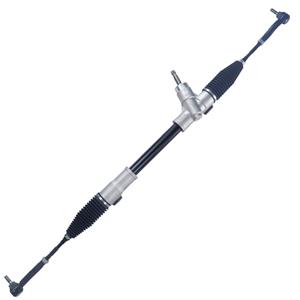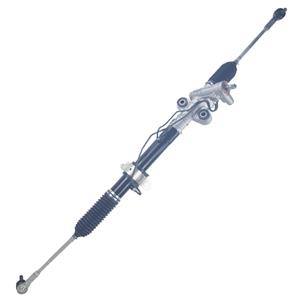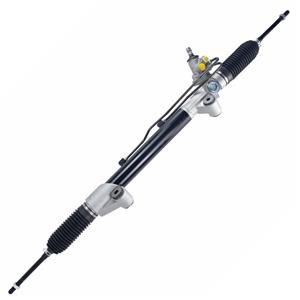What Are the Components of a Hydraulic Steering Rack?
Hydraulic steering systems play an important role in modern cars. They use hydraulic power to make it easier for drivers to control the steering wheel, especially at low speeds or when parking. The hydraulic steering rack is the core of this system. It is responsible for transmitting the driver's steering action to the wheels, while using the power provided by hydraulic oil to reduce the force required for steering.
In order to deeply understand the working principle of the hydraulic steering rack, it is necessary to discuss its components and the functions of each component in detail.
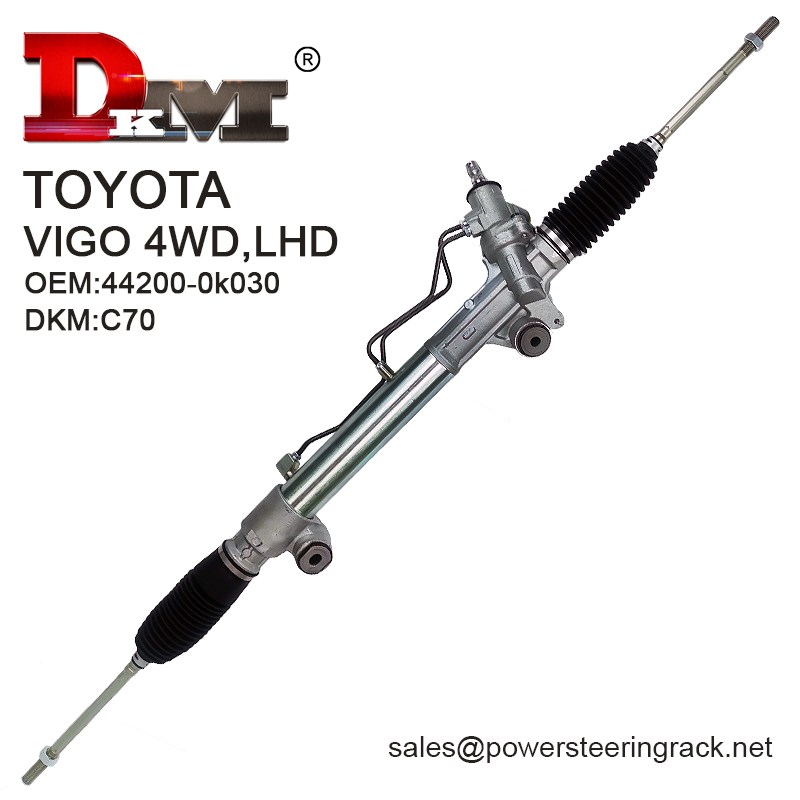
What Is a Hydraulic Steering Rack?
The hydraulic steering rack is the main mechanical component in the hydraulic power steering system. It is located under the front axle of the car and connects the steering wheel to the front wheels. It transmits the driver's steering force to the wheels through the rack and pinion mechanism, and provides power with the help of the hydraulic system to make the steering process easier.
The main function of the hydraulic steering rack is to convert the driver's steering action into left and right rotation of the wheel through the rack and pinion transmission structure. The hydraulic system reduces the driver's steering burden through the pressure generated by the hydraulic pump, making steering easier when driving at low speeds and parking.
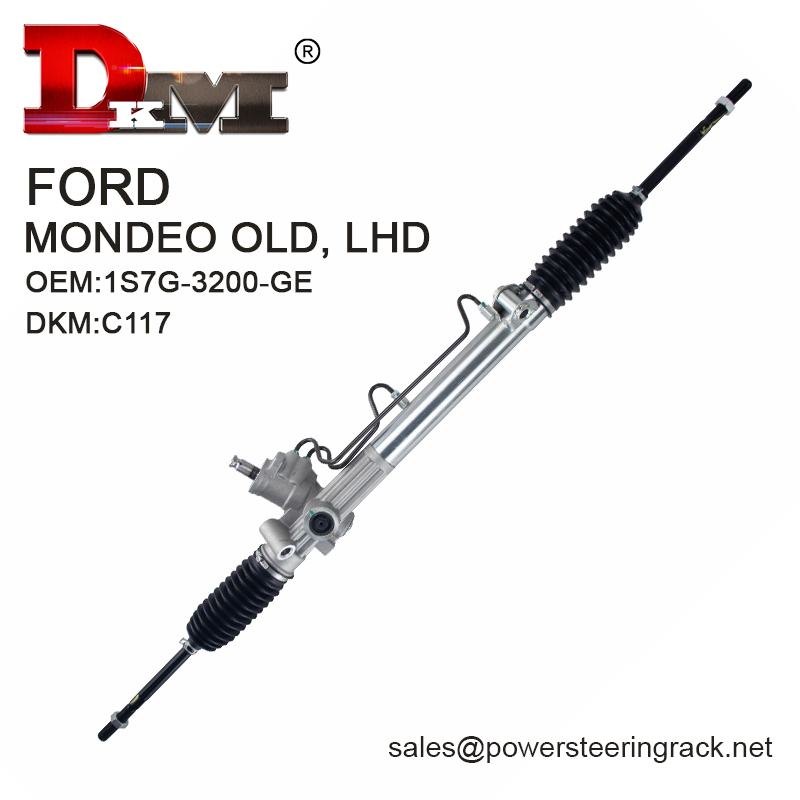
What Are the Components of a Hydraulic Steering Rack?
A hydraulic steering rack is mainly composed of a rack, pinion, hydraulic cylinder, seal, hydraulic pump, reservoir, hydraulic lines, pressure relief valve and steering torque sensor. Each component plays an indispensable role in the steering process. The following are the main components of a hydraulic steering rack and their functional descriptions.
1. Rack
The rack is the core component of a hydraulic steering rack and is usually made of high-strength steel. It is a long metal rod with a series of teeth on it. These teeth mesh with the pinion, which is located below the pinion and parallel to the axis of the front wheel. The rack is responsible for converting the rotational motion of the pinion into linear motion. When the driver turns the steering wheel, the pinion rotates and pushes the rack to move left or right, thereby driving the wheels to rotate in the corresponding direction.
2. Pinion
The pinion is located at the end of the steering wheel shaft and meshes with the rack. It is usually a cylindrical gear and is mainly made of high-strength steel. The main function of the pinion is to convert the rotational motion of the steering wheel into the linear motion of the rack. When the pinion meshes with the rack, the rack will move left and right accordingly for every rotation of the steering wheel at a certain angle, driving the wheels to turn.
3. Hydraulic Cylinder
The hydraulic cylinder is usually designed as an integrated whole with the rack and is located on both sides of the rack or inside it. The structure of the hydraulic cylinder includes a piston, and the two ends of the piston are connected to hydraulic pipelines. The hydraulic cylinder drives the piston to move through the pressure of the hydraulic oil, thereby providing additional assistance. Depending on the direction of steering, the hydraulic oil will enter one side of the hydraulic cylinder, pushing the piston forward or backward, assisting the movement of the rack and reducing the operating burden of the driver.
4. Seals
Seals are located around the piston of the hydraulic cylinder and at the inlet and outlet pipe interfaces of the rack. They are usually made of oil-resistant and pressure-resistant rubber or polymer materials. The function of seals is to prevent hydraulic oil from leaking from the hydraulic cylinder or other key parts. They ensure the sealing of the hydraulic system so that the hydraulic oil pressure can be maintained, thereby ensuring the normal operation of the steering power.
5. Hydraulic Pump
The hydraulic pump is usually driven by the engine and connected to the engine by a belt. There are multiple blades or gears in the pump body to promote the circulation of hydraulic oil. The hydraulic pump is responsible for extracting hydraulic oil from the oil tank and pushing it to the hydraulic cylinder at high pressure. The working efficiency of the hydraulic pump directly affects the power-assisting effect of the steering system. It is the "heart" of the entire hydraulic system and ensures that the hydraulic oil flows efficiently in the system.
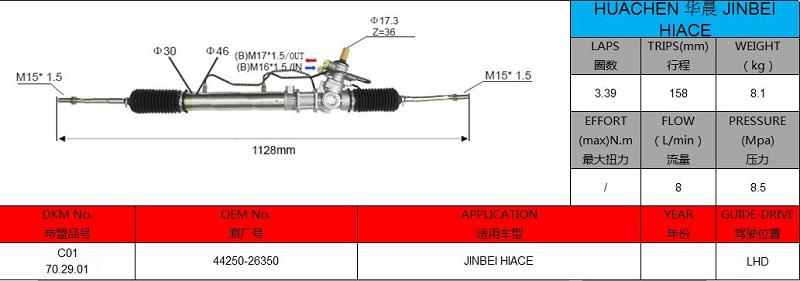
6. Hydraulic Reservoir
The hydraulic oil tank is usually located in the engine compartment and connected to the oil inlet of the hydraulic pump. The oil tank is usually made of metal or corrosion-resistant plastic. The function of the hydraulic oil tank is to store hydraulic oil and provide a continuous oil source for the hydraulic pump. The hydraulic oil tank is also equipped with a filter to prevent impurities from entering the hydraulic system, thereby protecting the normal operation of the hydraulic cylinder and pump.
7. Hydraulic Lines
Hydraulic lines include high-pressure pipes and low-pressure pipes, which connect the hydraulic pump, hydraulic cylinder and hydraulic oil tank. The pipes are usually made of high-pressure resistant rubber, metal or synthetic materials. The hydraulic line is responsible for transporting hydraulic oil in the hydraulic system. The high-pressure line transports the high-pressure oil generated by the hydraulic pump to the hydraulic cylinder, while the low-pressure line returns the low-pressure oil in the hydraulic cylinder to the tank. The sealing and pressure resistance of the hydraulic line directly affect the performance and reliability of the hydraulic system.
8. Pressure Relief Valve
The pressure regulating valve is usually installed at the output end of the hydraulic pump or in the hydraulic line. It consists of a spring, a valve and a valve seat. The main function of the pressure regulating valve is to maintain the pressure in the hydraulic system within a safe range. When the system pressure exceeds the set value, the regulating valve will open and guide the excess hydraulic oil back to the tank to prevent damage caused by overpressure in the system.
9. Steering Torque Sensor
The steering force sensor is mounted on the steering wheel shaft or steering column and is usually composed of a strain gauge or photoelectric element. The steering force sensor is used to detect the steering force applied by the driver and transmit the signal to the hydraulic system to adjust the size of the power assist. Although sensors are not common in traditional hydraulic steering systems, they have gradually been integrated in some modern vehicles to improve the response speed and accuracy of the system.
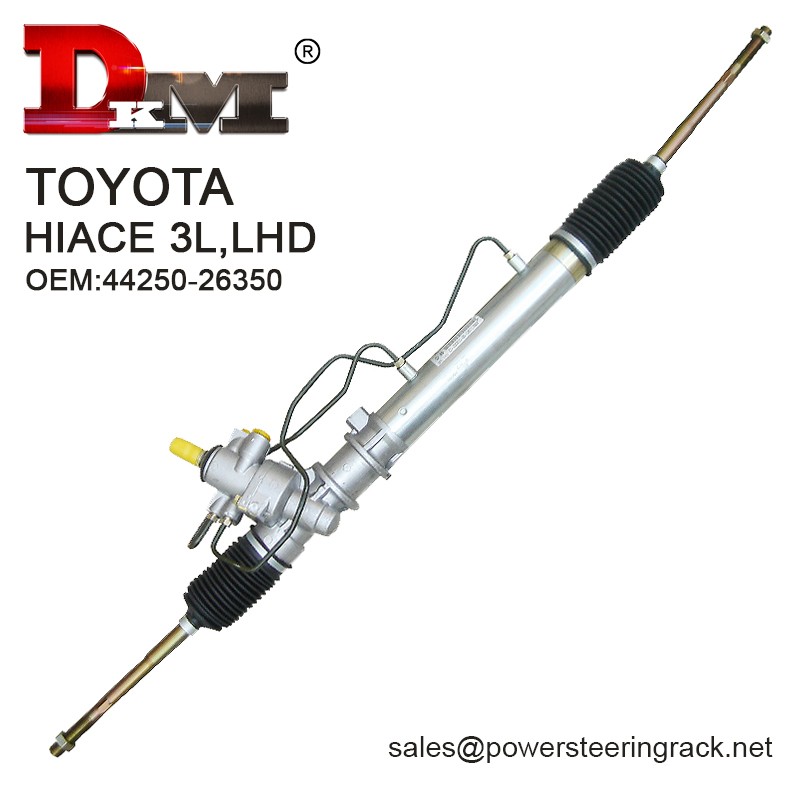
Synergy Between Warious Components
The various components of the hydraulic steering rack do not exist in isolation, but through precise design and coordinated cooperation, they work together to achieve smooth steering of the vehicle.
1. Coordination between gears and racks
When the driver turns the steering wheel, the gears begin to rotate and mesh with the teeth of the rack, driving the rack to move in the left and right directions. This movement is transmitted to the front wheels through the connecting rod, allowing the wheels to accurately respond to the driver's steering intention.
2. Power assist function of the hydraulic cylinder
As the rack moves, the hydraulic pump delivers high-pressure hydraulic oil to the piston side of the hydraulic cylinder to provide additional power for the steering process. This hydraulic power assist makes steering easier, especially when driving at low speed or parking, so that the driver can operate the steering wheel more easily.
3. The protective role of seals and pressure regulating valves
In the hydraulic system, seals and pressure regulating valves jointly ensure the safety and efficiency of the system. Seals ensure that the hydraulic oil does not leak, while the pressure regulating valve prevents the system pressure from being too high, avoiding damage to key components such as hydraulic cylinders or pumps.
4. Continuous oil supply from hydraulic pumps and oil tanks
The hydraulic pump ensures the continuous operation of the steering system by extracting hydraulic oil from the oil tank and delivering it to the hydraulic cylinder at high pressure. The oil tank not only provides storage for hydraulic oil, but also protects the system from impurities through filters, extending the service life of each component.
Conclusion
As the core component of the automotive hydraulic steering system, the hydraulic steering rack is composed of multiple key components, each of which plays an irreplaceable role in the system. From the mechanical transmission of the gear rack to the power assist of the hydraulic cylinder, to the protective function of auxiliary components such as seals and pressure regulating valves, these components work together to ensure the steering performance and driving comfort of the vehicle.
After understanding the composition of the hydraulic steering rack, we can better appreciate its importance in the car. Maintaining these key components will not only help extend the service life of the hydraulic steering system, but also improve driving safety and comfort.
